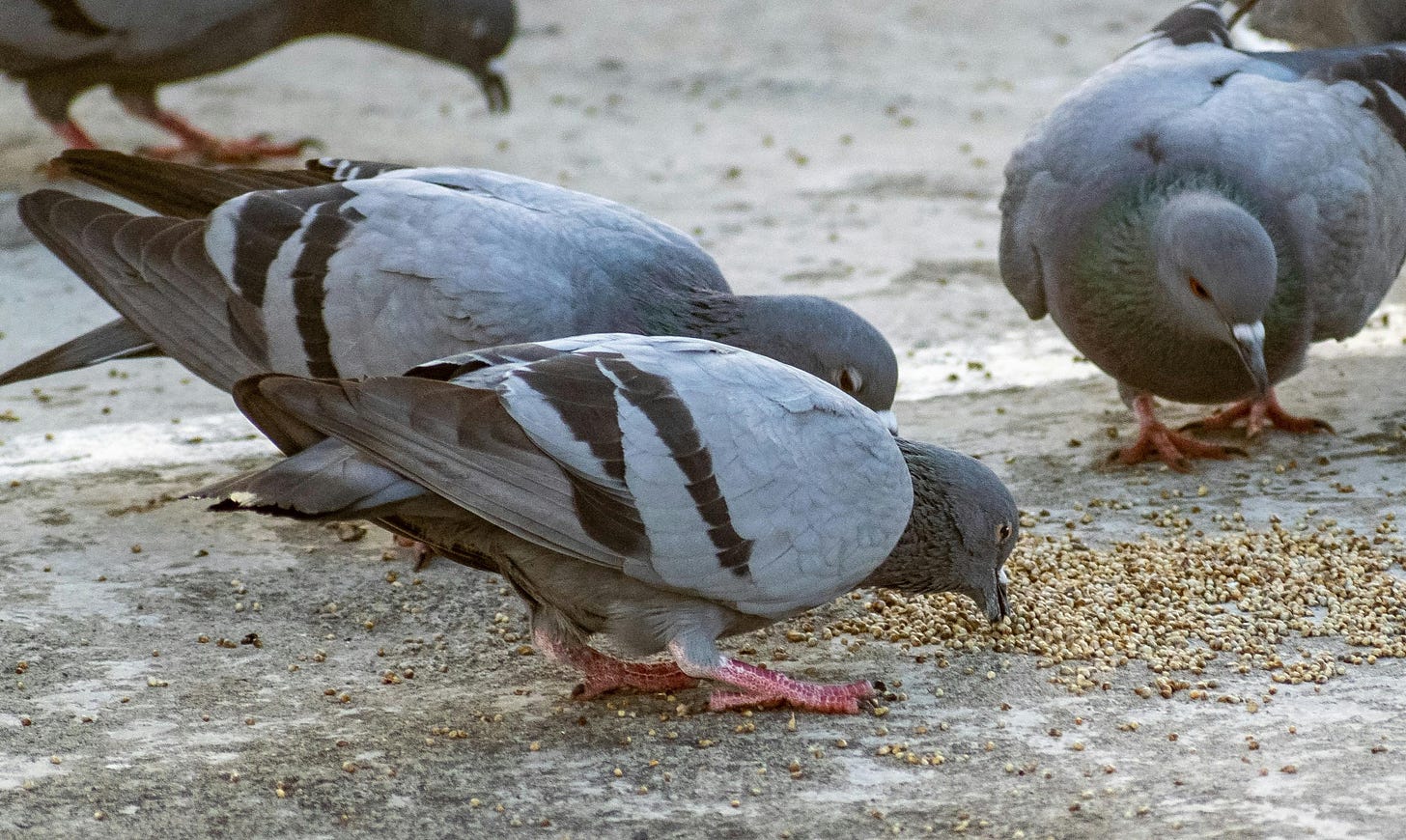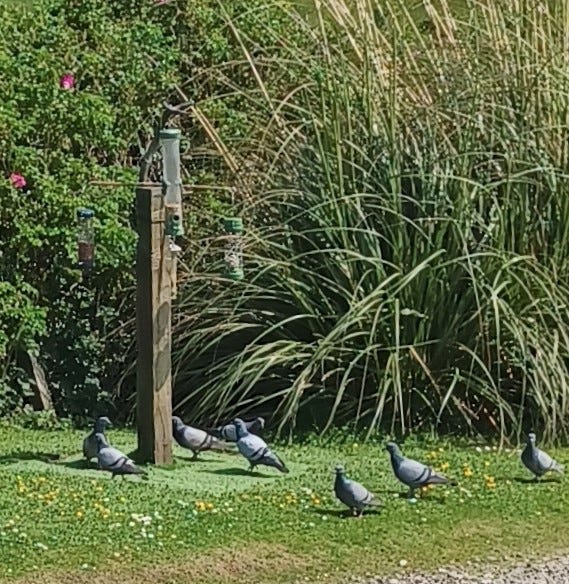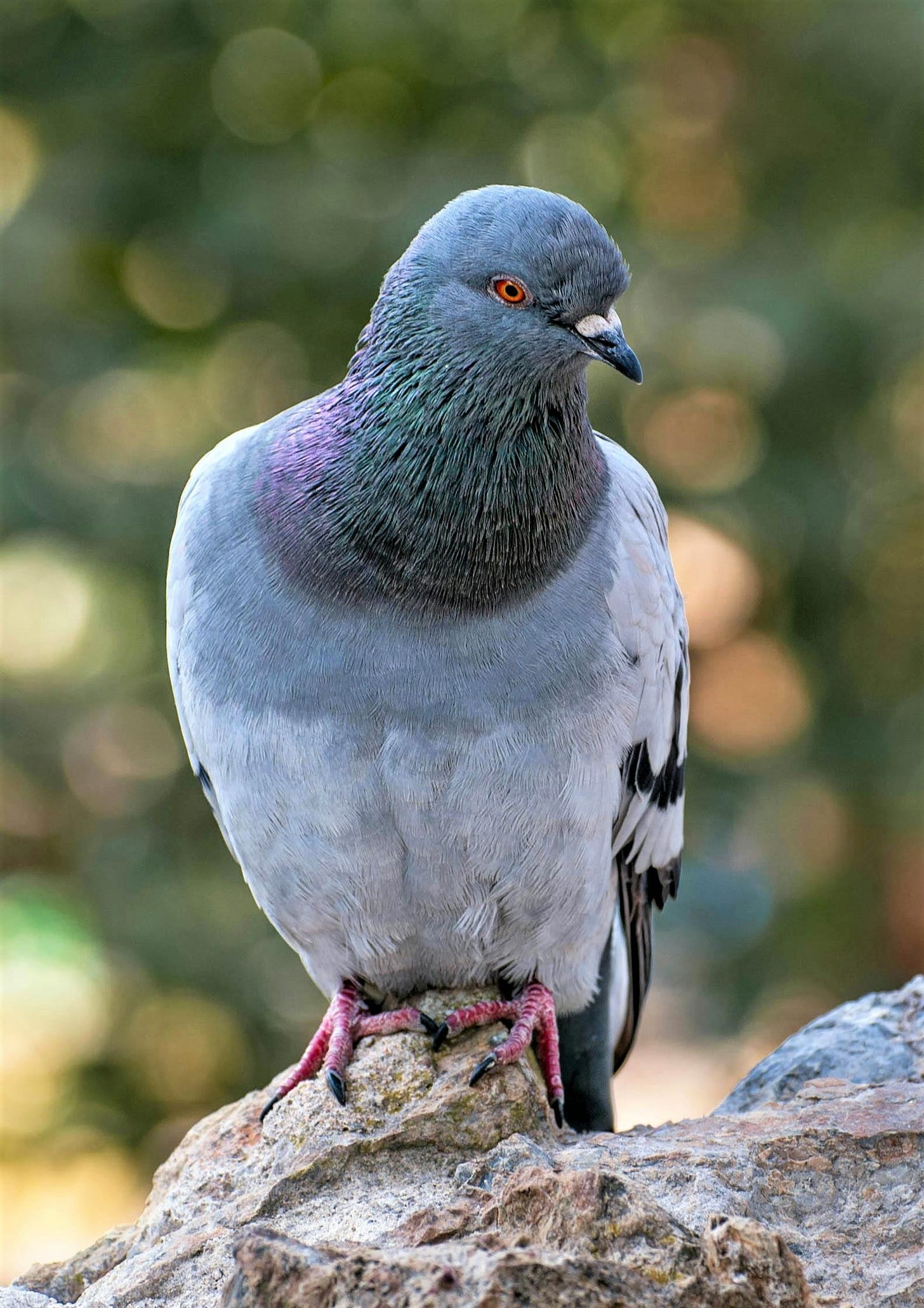I come in praise of pigeons…ahem..I mean Rock doves (Columba livia). They have a bad press, “flying rats” I heard them called locally, but looked at closely - they are a very neat, smartly dressed and beautifully coloured bird.

Pale grey overall with two bold black wing bars and superb iridescent purple and green on the neck, with a distinct diagnostic white band across the lower back which is clearly visible in flight. The grey tail has a black band on the lower edge, the outmost tail feathers are white. The legs are usually a rich dark red.
I have around sixteen to twenty regular doves visiting daily and they are entertaining to watch with their characteristic “pigeon” gait. Some have nearly mastered eating from the bird feeders but tend to fall off after a few seconds.
Most of the others walk around and around the bird table picking up the crumbs. So much so that they have worn the grass away and created a concave pit which fills with water when it rains making a muddy mess. I filled the pit with gravel which helped for a while, but the birds then tended to scratch for the dropped seed and ended up scattering the stones across the lawn, reluctantly I now use a plastic mat below the feeder to reduce the mess.
Interestingly, we have one dove visiting which is almost all white, an indication of a possible genetic introgression from stock doves or city pigeons. Some domestic pigeons have hybridised with their progenitor the rock dove, which sadly means that many if not most rock doves are of dubious true genetic status.
All our rock doves are an example of a species now threatened with extinction as a ‘distinct entity’ – a bit like the Scottish wildcat is equally in danger from breeding with domestic felines.
A recent study published in iScience regarding rock dove genetics in the north of Scotland revealed that most are not 100% pure breed but are “polluted” with other pigeon genes. However, the doves with least introgression appear to be those in the Outer Hebrides. This poses the question; ‘Why are we not trying to preserve the true pure Rock Dove?’ in what is potentially, their last unique home. Perhaps our Hebridean rock doves should be on the Red List?
Observing the doves around Smoo cave in Durness recently, I was impressed by how uniform they all looked, not a hint of mixed plumage anywhere. All the nooks and crannies on the rock face appeared delightfully occupied, either by doves or fulmars. The combination of cooing dove and chattering fulmar echoing around the cave was spellbinding.
They really are troglodytes too, whilst exploring the entrance to a smaller cave there at Smoo, with a group of local schoolchildren, we came upon a nesting dove, in a cave within a cave, and it just sat there watching us as if it was quite a normal experience for it. We left quietly, giving it peace - which, as a dove, it’s contractually entitled to.
Donald Mitchell is a High Life Highland Countryside Ranger, a keen observer of nature and wildlife, he dedicates his time to documenting and sharing insights about the natural habitats in North West Sutherland. With a particular interest in marine life, he aims to help others gain a deeper understanding and respect for the delicate balance of our ecosystem.








That's really interesting, Donald. I think we have some pretty authentic rock doves living in the caves along the Black Isle coast, but Smith et al. didn't sample those. I'd love to know...